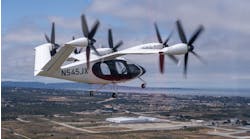Collaboration and Partnership: The Crucial Elements to Achieving a US Manufacturing Renaissance
The U.S. is now embarking on a manufacturing renaissance, and while the drivers for achieving this are usually thought to be skills and jobs, there are two other crucial elements which are often overlooked – collaboration and partnership.
Many international manufacturing firms, including Mitsubishi Heavy Industries (MHI) Group, are working to strengthen and energize U.S. manufacturing and infrastructure, adding to the technological strength of the country while employing thousands of workers and providing needed skills and training.
At MHI, we believe that achieving a manufacturing renaissance will require a spirit of partnership – a solutions-focused approach that will truly move the world forward.
As a global leader in engineering and manufacturing with Japanese roots, MHI is a testament to the success of building business through collaborative partnerships with companies, communities and governments around the world.
The U.S. has always presented a significant opportunity for MHI and we are now investing heavily to expand our operations by 20% over the next two years.
To date, the U.S. represents our largest market outside Japan, accounting for $7.5 billion of our $40 billion total revenue in fiscal 2015. We employ over 7,300 Americans operating across 30 states and we anticipate adding more jobs as the manufacturing renaissance gets under way.
Supply Chain
In many ways, we are an American success story, built around cooperation and collaboration. Our supply chain focuses on always using the best local partners. We partner with numerous U.S. companies to develop products and solutions that add to the dynamism and innovative power of American industry. We also have longstanding partnerships with some of the leading U.S. manufacturers and technology companies to supply parts for commercial aircraft, cars, construction equipment, forklift trucks and more.
Our local U.S. partnerships give us a strong base for further cooperation and expansion. This year we celebrate the 25th anniversary of the founding of Mitsubishi Caterpillar Forklift (MCFA), a joint-venture partnership between MHI and Caterpillar, the U.S. industrial equipment company. MCFA’s collaborative approach has allowed it to achieve great success in maintaining its edge in the face of technological disruption within the industry.
Combining the best of U.S. innovation and Japanese management practices, MCFA has invested in new facilities and workers and now has over 800 employees in Houston, with a further 400 spread across the U.S. MCFA’s collaborative customer-focused approach has allowed it to meet the increasingly complex requirements from online retailers for flexibility and maximizing of storage space, while simultaneously improving efficiency and reducing costs.
Our unique approach also recognizes the requirements of our U.S. customers and partners. While many manufacturers just sell products within the U.S., we believe it is important to invest and build factories to make products within the country for the local market. Our turbine plant in Savannah, Ga. produces the world’s most fuel efficient gas turbines, with orders for over 100 turbines across the Americas.
Collaboration
Our success there was built on collaboration with the local region; through innovation partnerships with technical colleges, training initiatives with the local government and efforts to hire the very best local machinists and assembly technicians.
We also recently established our new Oil & Gas Division in Houston, Texas. As the hub of the U.S. energy industry, it is vital for us to have access to the skills and expertise associated with this region, as well as to bring our integrated solutions closer to customers and production sites. Houston is also the site of MHI’s new U.S. headquarters. The sharing of skills works both ways, which is why we are also pursuing opportunities to develop training programs with local colleges in the region.
We are also aiming to encourage greater collaboration with our customers. One such example of this is our recently unveiled digital solutions package, MHPS-TOMONI for customers in the energy sphere. TOMONI (meaning “Together With” in Japanese) is tailored to fit each customer's priorities at the power plants they operate. Rather than taking a “top-down” approach, it instead emphasizes collaboration between OEM and plant operator, maximizing the advantages of highly digitized power plants, while recognizing the need for human insights.
Workforce Talent Issues
Beyond this, companies must also encourage greater collaboration within their workforce. With our efforts to bring manufacturing back to the U.S., we are creating high-end technology and fostering a workforce focused on skill and precision.
As we focus our business on adding more value and on integrated engineering services, one of the most pressing concerns is the impending skills gap employers will face in the coming years. This gap is particularly alarming in the manufacturing sector where, according to some studies, 2 million U.S. manufacturing jobs may go unfilled due to a lack of skilled candidates.
One solution is a strong focus on skills transfer. At MHI, we ensure that newer recruits receive on-the-job training and guidance from our experienced employees, which helps to foster the next generation of engineers and specialists. In this way, essential manufacturing skills and craftsmanship can be retained, bringing vitality to the future of manufacturing in the U.S. and elsewhere.
At MHI, we have great confidence in the manufacturing future of the U.S. With our recent investments and efforts to bring manufacturing back to the U.S., we are focusing on high-end technology and skills, and on providing our customers with high added value engineering services tailored to their precise needs.
To this end, we will need the appropriate mix of skills and experience, covering not only production but also sales and after-service. As manufacturing becomes more dependent on effectively linking these elements, and as new technologies such as automation and artificial intelligence become increasingly prevalent, it will be more important than ever to build an environment that maximizes opportunities for collaboration and partnership.




